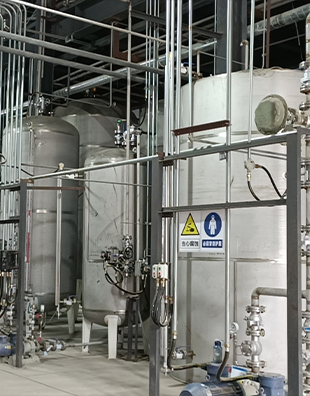coagulants and flocculants in water treatment
Coagulants and Flocculants in Water Treatment
Water treatment is an essential process for providing safe and clean drinking water. Among the various methods employed in this process, the use of coagulants and flocculants plays a critical role in removing suspended particles, impurities, and microorganisms from water. Understanding the functions and applications of these substances is fundamental to improving water quality and ensuring public health.
Coagulants A First Step in Water Treatment
Coagulants are chemicals that destabilize the colloidal particles present in water, allowing them to agglomerate and form larger clusters, known as flocs. The process of coagulation usually begins with the addition of a coagulant to the water, which causes tiny particles—such as silt, clay, and organic material—to stick together. Common coagulants include aluminum sulfate (alum), ferric chloride, and polyaluminum chloride.
When coagulants are introduced into water, they neutralize the charges on colloidal particles, leading to their aggregation. This process is influenced by factors such as pH, temperature, and the characteristics of the particles themselves. Effective coagulation can significantly reduce the turbidity of the water, which is a key indicator of water quality.
Flocculants Enhancing the Coagulation Process
Following coagulation, flocculation is the next step in water treatment. Flocculants are substances that promote the formation of flocs by providing additional binding agents to the newly formed aggregates produced during coagulation. They typically consist of long-chain polymers that can bridge multiple particles, enhancing the size and settling rate of the flocs.
Common flocculants include polyacrylamide and various natural polysaccharides, such as xanthan gum. The addition of flocculants improves the efficiency of the sedimentation process, allowing for quicker and more effective removal of impurities from the water. By increasing the size of the flocs, flocculants help to facilitate the separation of solids from clear water, making downstream processes like filtration and disinfection more effective.
coagulants and flocculants in water treatment

The Importance of Proper Dosage
The success of both coagulation and flocculation processes relies heavily on the correct dosage of coagulants and flocculants. Overdosing can lead to excessive floc formation, resulting in operational problems and increased costs. Conversely, underdosing may fail to effectively remove impurities, compromising water quality.
Operators of water treatment facilities must carefully monitor and adjust the chemical dosages based on water quality parameters, such as turbidity and suspended solids content. Regular testing and optimization help to achieve the desired treatment goals while minimizing chemical usage and costs.
Environmental Considerations
The use of coagulants and flocculants is generally considered safe; however, environmental considerations must be taken into account. Certain coagulants can introduce aluminum or iron into the treated water, which may raise concerns about long-term exposure and environmental impact. As a result, many treatment plants are now exploring alternatives, such as biodegradable flocculants or natural coagulants derived from plant extracts, which offer a more sustainable approach to water treatment.
Conclusion
In conclusion, coagulants and flocculants are indispensable components of modern water treatment processes. They work in tandem to improve water quality by removing suspended particles and enhancing the efficiency of purification systems. By carefully managing the dosage and selection of these substances, water treatment facilities can ensure safe and clean water for communities while also considering environmental sustainability. As technology and research continue to advance, the future of coagulants and flocculants in water treatment promises to be both innovative and eco-friendly, paving the way for more effective and responsible water management practices.
-
Premium Isothiazolinones | Broad-Spectrum Biocidal SolutionsNewsAug.28,2025
-
LK-319 Special Scale And Corrosion Inhibitor For Steel Plants: Advanced Solutions for Industrial Water SystemsNewsAug.22,2025
-
Flocculant Water Treatment: Essential Chemical Solutions for Purification ProcessesNewsAug.22,2025
-
Isothiazolinones: Versatile Microbial Control Agents for Industrial and Consumer ApplicationsNewsAug.22,2025
-
Scale Inhibitor: Key Solutions for Water System Scale PreventionNewsAug.22,2025
-
Organophosphonates: Versatile Scale Inhibitors for Industrial Water SystemsNewsAug.22,2025





